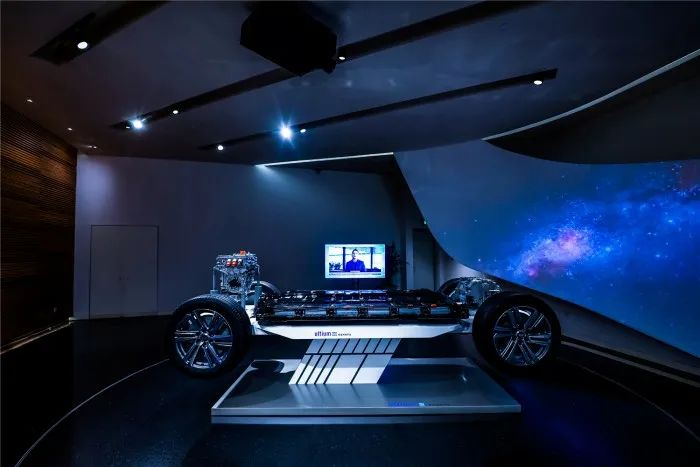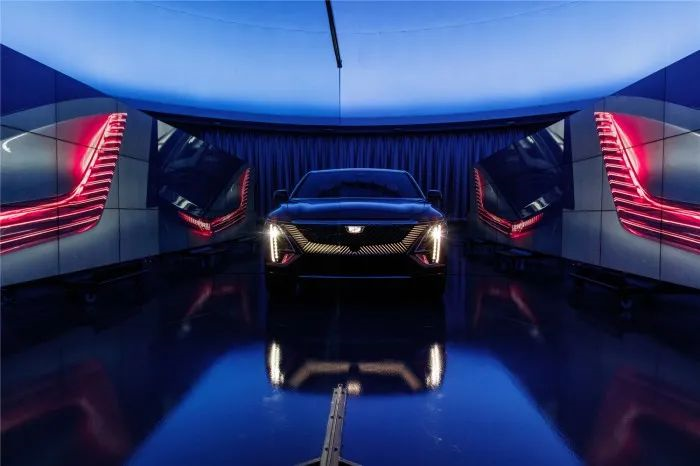Key Year for Joint Venture Brands to Counterattack in China’s EV Market in 2020
In 2020, joint venture brands made a counterattack in China’s EV market. Volkswagen launched its pure electric vehicles on the MEB platform and began selling them in China after investing heavily. General Motors had long been concentrating on underlying technology, and the Altairnano electric vehicle platform continued by cutting its wrists to achieve the first global debut.
In mid-September 2021, at the Pan Asia Technical Center of SAIC-GM, I saw the first product built on the Altairnano platform by SAIC-GM, the Cadillac LYRIQ. When I looked closely at the LYRIQ display car less than a meter away, four questions quickly came to mind: positioning, competitors, advantages, and user profiles. Analyzing the essence of these four questions is the key to determine if a product can become a hit in the market.
“Can a product become a hit” is the first question I think of when looking at a product, because according to market data analysis from the past two years, only 3-5 products will stand out in each segmented market, and the sales of later products will show a cliff-like decline. In addition, the “single-car explosion segmentation strategy” is currently prevalent among new energy vehicle companies, so it is not uncommon to see hit products in China’s EV market.
Joint Venture Brands Struggle to Create Hits
What is a hit? I believe a hit model is a product created by multiple factors such as “right timing, right place, and right people.” However, these products have serious limitations in the market. For instance, the Ideal ONE, judged from its sales performance in the past three months, is undoubtedly a hit.
The three characteristics that make the Ideal ONE a hit are:
Firstly, as a dad wagon, its positioning completely matches the current population structure in China. In the context of aging, the Chinese government has opened up the two-child policy and the three-child policy. The trait people look for in transportation is space and practicality.
Secondly, intelligence has become the core product power for automobiles, which has gone from a side product to the center stage following the efforts of numerous new energy vehicle companies. Chinese car companies are leading the world in terms of deploying intelligence.
Thirdly, the range-extended powertrain solves the anxiety problem of users fundamentally since the nature of range anxiety mainly comes from China’s vast territory. Chinese users’ understanding of long-distance travel is basically more than 500 kilometers. 500 kilometers can cover at most 2-3 provinces in eastern China, and in western China, people cannot even travel across one province. However, in Europe, 500 kilometers can cross countries.After summarizing the above three points, we can find that the reason why Ideal ONE has become a hot-selling product is because it understands the Chinese market. However, as a global car, it is difficult for LYRIQ to meet the differentiated needs of specific regions, which is a problem that every joint venture brand car company must face in the Chinese market since the new four modernizations.
This is not a problem that can be solved simply by analyzing positioning, competitors, advantages and user profiles, because the situation now is that there will be independent brands and new forces of car companies that understand Chinese users better than old brands in any segmented market. Perhaps the luxury car market was still the brutal growth land of joint venture brands five years ago, but now there are NIO, JIDU, and GH. Therefore, it is difficult for LYRIQ to achieve amazing results.
Do traditional car companies need hot-selling products? I don’t think so, because hot-selling products will also be backfired. The most obvious case is Ideal ONE. In May 2021, Ideal ONE was restyled, and the content of this restyling was no less than a mid-term facelift. The appearance, interior, chip, and functions of 2021 Ideal ONE have been upgraded, but it has only been a year and a half since Ideal ONE started shipping. As soon as this news came out, a large number of old Ideal ONE owners shouted, “RNM! Refund!”
The reason why there was a restyling in such a short period of time is that hot-selling products are not a permanent wealth code. Rapid iteration and improvement of experience have become things that must be done to stabilize positioning and sales. Of course, this operation is at the expense of loyalty of old users.
The product lineup of traditional car companies is very rich, which also makes it impossible for them to invest too much energy in one product. What they need to do is to satisfy the needs of users in various segmented markets with economies of scale, while properly using brand value to attract potential consumers. Obtaining considerable sales performance is also a matter of course.
The sales volume can only be seen when the product matrix matures. During our roundtable discussion with several senior executives of Pan Asia Technical Automotive Center, a media colleague raised this question: Can Cadillac LYRIQ break through the bottleneck of the high-end large pure electric SUV market? At present, the mainstream products in this market are the large and medium-sized SUV products of the three BBA enterprises and the NIO ES8. There are not many competitors, but the overall sales are still much different from the same level of gasoline vehicles.In terms of product performance, LYRIQ is noticeably superior to BBA’s traditional luxury brand products. Due to its construction on a brand new Ultium three-electric platform, Cadillac has achieved a wheelbase of 3094mm within a vehicle size of 5003x1978x1635mm for the LYRIQ. This data is already far beyond the reach of competitors who are just converting from gasoline to electric power, and is even larger than products such as the X5, GLE, and Q7. From the North American starting price of $58,795 for the LYRIQ, it will be a high-performance, cost-effective product in the mid-to-large-sized luxury all-electric SUV market.
At the same time, LYRIQ will also adopt the highest standard Qualcomm 8155 chip in the industry, equipped with a 33-inch surround-sound ultra-HD retina screen with 9K resolution and pixel density, which can run up to 650+ kilometers under the CLTC (China Light Urban Vehicle Test Procedure) conditions. Furthermore, new user operating models, direct sales models, and energy supplement networks are LYRIQ’s “new tactics” to compete with competitors in the Chinese market.
However, breaking through the bottleneck of market growth does not mean surpassing competitors in terms of product performance. Currently, the market for mid-to-large-sized luxury all-electric SUVs is indeed not large, and the total monthly sales may not exceed 10,000 units. Of course, in the future, as the penetration rate and market share of electric vehicles increase, this market will definitely grow as well. But for automakers, waiting for natural market growth is undoubtedly a passive approach.
After BBA entered the all-electric SUV market, it has been in the stage of testing the market, and the target of the test is the consumer’s acceptance of prices. The earliest entrant into this market was the imported Audi e-tron, which was priced at RMB 700,000 when it first entered China, and low sales were inevitable. After that, the domestic version of the Audi e-tron lowered its price to the range of RMB 500,000-600,000, but sales remained sluggish. Subsequently, Mercedes-Benz EQC and BMW iX3 also lowered the price of electric cars. Especially for the iX3, the price of the domestic version of the iX3 has already reached the same level as the X3.Early adopters of BBA’s pure electric vehicles often feel that they are not worth the money due to their high prices and relatively short driving range. However, prices have now fallen and BMW’s iX3 has achieved an average range of 500 kilometers. But what is the result? Sales of gasoline vehicles in the same category are still ten times that of electric vehicles, indicating that this is not the core reason.
In March of this year, Tesla’s Model Y sales in China exceeded 10,000 units, even though the standard-range version for CNY 276,000 had not yet been launched, which means that the average transaction price of all Model Ys sold was between CNY 347,000 and CNY 387,000. This price is almost the same as the starting price of the iX3. However, the price difference of 50,000 yuan leads to a sales difference of more than ten times. This is definitely not in line with market logic. Moreover, Tesla is not a local enterprise and is also subject to legal restrictions on FSD in China. Their in-vehicle intelligence is also lagging behind certain domestic brands and start-ups. Therefore, in a sense, there is no reason for BBA to lose to Tesla.
Taking all these factors into account, I have come to the following conclusion: in the eyes of consumers, traditional car companies are only gasoline vehicle companies, not electric vehicle companies. Both BBA and other traditional car companies have exposed the problem of having insufficient electric vehicle products in the market, with Mercedes-Benz and BMW currently only selling one pure electric vehicle, while Audi has only two.
A single product alone cannot sustain a brand’s image in the minds of consumers, especially after new entrants have entered the market. Consumers have started to subconsciously separate car companies from electric vehicle companies. It’s like how you would never buy a pair of Oxford shoes from Nike’s store, even though you know that Nike’s brand will ensure quality. Nevertheless, people still think that Nike does not belong to this field.
Returning to the question raised by the media teacher, LYRIQ’s strong product power determines its leading position in the niche market. Whether it can drive market growth depends on SAIC-GM’s other great weapon, the Ultium three-electric technology platform.
It is no exaggeration to say that from the end of last year to now, I have written three articles about the Ultium platform. Regardless of how I describe its advantages, I will always prioritize its flexibility.By means of modular design of battery and electric drive, the Oter Energy platform can combine 12 to 16 battery cells and form battery packs of 6, 8, 10, 12, and 24 modules. The battery packs can also be placed horizontally, vertically, or stacked in the battery tray. These battery packs, combined with three motors of 6 different energy densities, can create up to 19 power units. Oter Energy platform will provide 7 types of drive forms, including models of different sizes, in the Chinese market. This will not only meet the needs of different subdivided markets, but also reduce the product development cycle and accelerate the pace of SAIC-GM’s layout of pure electric vehicle product matrix.

Only when the richness of electric vehicles’ product matrix is as same as that of fuel vehicles, can traditional car companies complete the electrification transformation or become comprehensive car companies. Only when the products match the brand positioning in consumers’ minds, can sales growth be promoted.
Therefore, my point of view is that it is impossible to tell LYRIQ’s potential and even less likely to become a hot product at the moment it enters the market because its effect will be similar to that of BBA’s products. Only when Cadillac truly becomes an electric vehicle company in consumers’ minds, can we see the most realistic feedback on sales.
Conclusion
Although LYRIQ will not be officially sold until next year, SAIC-GM does not need to worry because they have already taken the lead in the planning and underlying technology of electric vehicles over most traditional car companies. The structured product matrix is the best response to the needs of subdivided markets and audience preferences. In the complete marketing strategy, brands need to meet multidimensional needs through the tactical planning of product matrix, in order to maximize revenue and achieve sustainable development.
This article is a translation by ChatGPT of a Chinese report from 42HOW. If you have any questions about it, please email bd@42how.com.
